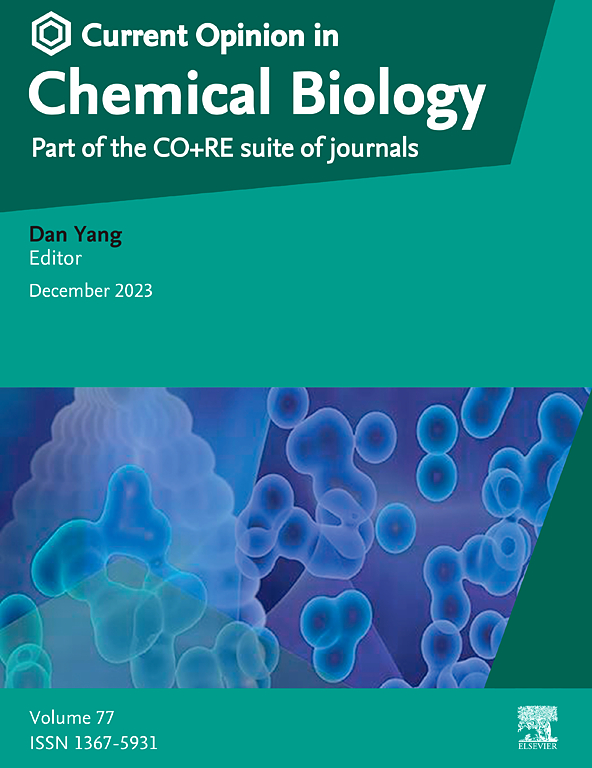肽毒素作为离子通道生物学的工具。
IF 6.1
2区 生物学
Q1 BIOCHEMISTRY & MOLECULAR BIOLOGY
引用次数: 0
摘要
动物毒液含有离子通道靶向肽毒素,可造成瘫痪或疼痛。这些毒素对其目标离子通道的高特异性和效力为它们作为通道生物学工具的部署提供了诱人的机会。毒素介导离子通道调制的机制研究在我们对通道结构和门控机制的理解方面取得了里程碑式的突破。毒素最近被重新用作强大的结构生物学探针,以获得难以捉摸的毒素稳定构象的离子通道结构,为通道门控提供前所未有的见解。其中一些结构提供了对蛋白质-脂质相互作用的深刻见解,为旨在阐明这些相互作用的功能作用的基于电生理学的研究提供了蓝图。此外,与荧光团附加的毒素已被用于临床、生物物理和细胞生物学基础的研究。本文综述了离子通道靶向毒素作为工具在电压门控离子通道和瞬时受体电位通道生物学中的作用。本文章由计算机程序翻译,如有差异,请以英文原文为准。

Peptide toxins as tools in ion channel biology
Animal venom contains ion channel-targeting peptide toxins that inflict paralysis or pain. The high specificity and potency of these toxins for their target ion channels provides enticing opportunities for their deployment as tools in channel biology. Mechanistic studies on toxin-mediated ion channel modulation have yielded landmark breakthroughs in our understanding of channel architectures and gating mechanisms. Toxins have been recently repurposed as powerful structural biology probes to obtain structures of ion channels in elusive toxin-stabilized conformations providing unprecedented insights into channel gating. Insightful glimpses of protein–lipid interactions provided by some of these structures have served as blueprints for electrophysiology-based studies aimed at elucidating the functional roles of these interactions. Moreover, toxins appended with fluorophores have been used for clinical, biophysical, and cell biology-based studies. Herein, we summarize the contributions of ion channel-targeting toxins as tools in voltage-gated ion channel and transient receptor potential channel biology.
求助全文
通过发布文献求助,成功后即可免费获取论文全文。
去求助
来源期刊

Current Opinion in Chemical Biology
生物-生化与分子生物学
CiteScore
13.30
自引率
1.30%
发文量
113
审稿时长
74 days
期刊介绍:
COCHBI (Current Opinion in Chemical Biology) is a systematic review journal designed to offer specialists a unique and educational platform. Its goal is to help professionals stay informed about the growing volume of information in the field of Chemical Biology through systematic reviews.
 求助内容:
求助内容: 应助结果提醒方式:
应助结果提醒方式:


